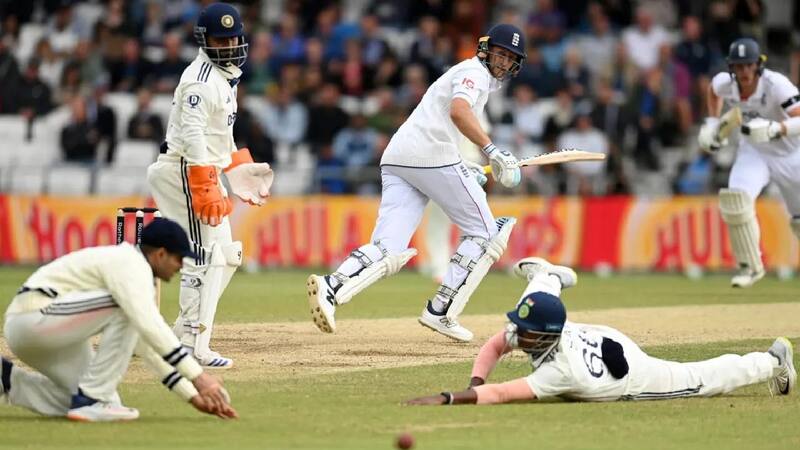This website uses cookies so that we can provide you with the best user experience possible. Cookie information is stored in your browser and performs functions such as recognising you when you return to our website and helping our team to understand which sections of the website you find most interesting and useful.
IND vs ENG 2nd Test: How many runs England need to save themselves from having a follow-on?
Indian team have gained a strong lead over England for the first innings of 2nd Test in Edgbaston. Now England might see themselves in a situation of a follow-on.

The second Test of the ongoing five-match series between India and England at Edgbaston in Birmingham resumed today (July 4th) with Day 3. English team being the host began the day with a score of 77/3, as the team trailed by 510 runs. Mohammed Siraj gave his team a much-needed advantage as he claimed two-back-to-back wickets.

Mohammed Siraj claimed wickets of Joe Root and Ben Stokes, which left the charge on Harry Brook and Jamie Smith to take on the responsibility and save their team from a situation of a follow-on.

How many runs England have to score in order to avoid follow-on?
As per the rules of Test cricket, when the team batting first has a lead of at least 200 runs, a follow-on is enforced. Since India posted a score of 587 runs in their first innings, England will have to score at least 388 runs if they want to avoid the situation.

TRENDING NOW
How is follow-on calculated?
According to Melbourne Cricket Club’s (MCC) Law of Cricket, a follow on is only enforced after the end of the first innings of both the teams. The equation used to calculate the runs required to apply the follow-on depends on the number of days that are scheduled for the match.

Follow-on rule for a different matches:
- If a match is set to be held for five days, the lead required to apply the follow-on is a lead of 200 runs or more.
- If a match is set to be held for three or four days- the margin comes down to the lead of 150 runs or more.
- A two day match is given the margin of 100 runs or more.
- For a one-day match, the lead needed is of 75 runs or more.
















